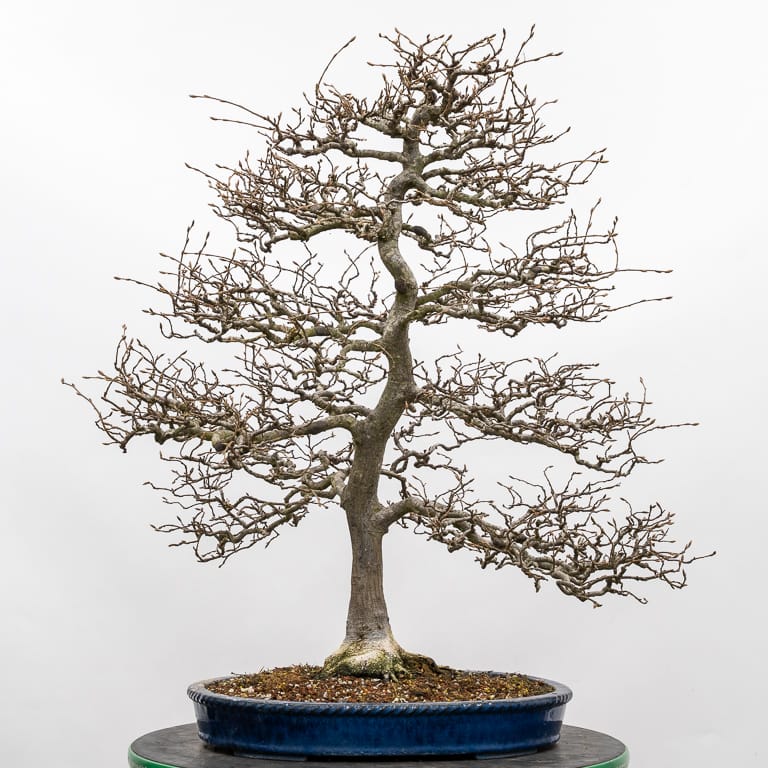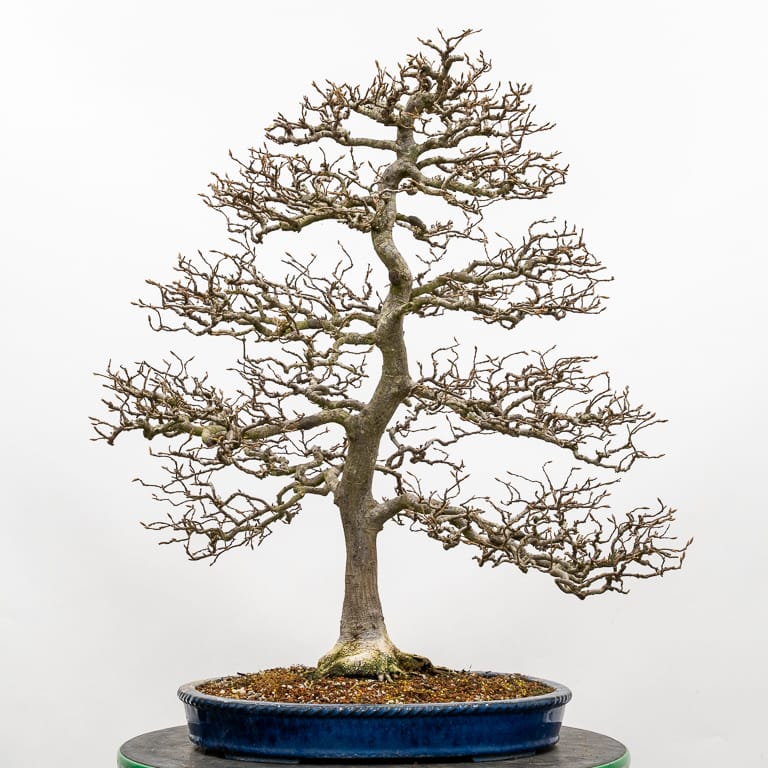When I sat down to work on the hornbeam below, I thought about how the tree was created. The branches have a contorted appearance – so much so that I wondered if this is a contorted cultivar.

Informal upright hornbeam

After removing the old leaves
If the contortions are natural, I’d like to preserve them as I develop the tree. If they were created by pruning and wiring, I’ll work with these patterns to ensure that the fine ramification has the same character as the larger branches.
The tree was developed by Gene Lynch of the Redwood Empire Bonsai Society over many years. After removing the long shoots and some of the crossing branches, the silhouette became clear.

After cutback – 29″
Going forward, I’ll be weighing options for future development. Will greater density improve the design or look “heavy” considering the slender trunk? Will a narrower silhouette with greater variation between branch length make for a more dynamic design or look out of place given the gentle movement of the trunk?
I’ll think about these and other questions during the winter months and will look forward see what becomes of the tree going forward!
Book Updates
The Little Book of Bonsai has been having a good holiday season. Last month it was named one of the best Home and Garden books of the year by Barnes & Noble (I never thought I’d appear on a list with Martha Stewart).
This month the book received a brief review on TikTok from the bonsai-themed account of Tobin Mitnik. If you need a dose of TikTok-style bonsai levity, I highly recommend checking out his channel (and the review) here.
✕
Subscribe to Indian Bonsai Art
New Posts Delivered Every Tuesday and Friday
